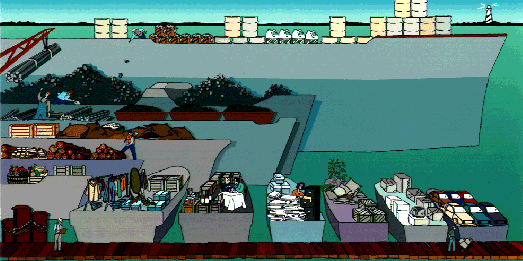
Illustration © Bonnie Branner


Illustration © Bonnie Branner
By far, our most important economic use of the oceans is shipping. Worldwide each year, tankers, liners, and freighters import and export billions of tons of products valued at over $2 trillion. §
Shipping lanes are oceanic superhighways
When steamships replaced sailing ships late in the 19th century, prevailing winds no longer determined routes. Shipping lanes were gradually adopted, based simply on the fact that a great circle is the shortest distance between two ports. Ships detour only to miss land, ice masses, bad weather, or each other. § The major routes have remained largely the same for a century. §
Crude oil 1,307,000,000 metric tons Coal 371,000,000 metric tons Iron ore 334,000,000 metric tons Grain 208,000,000 metric tons
lumber & logs 98,700,000 metric tons fruit & vegetables 39,800,000 metric tons clothes & household goods 30,800,000 metric tons food, beverages & tobacco 29,000,000 metric tons paper 23,500,000 metric tons electronics 12,300,000 metric tons sugar 16,800,000 metric tons cars 8,800,000 metric tons
![]() Ocean Planet Exhibition Floorplan
Ocean Planet Exhibition Floorplan
![]()